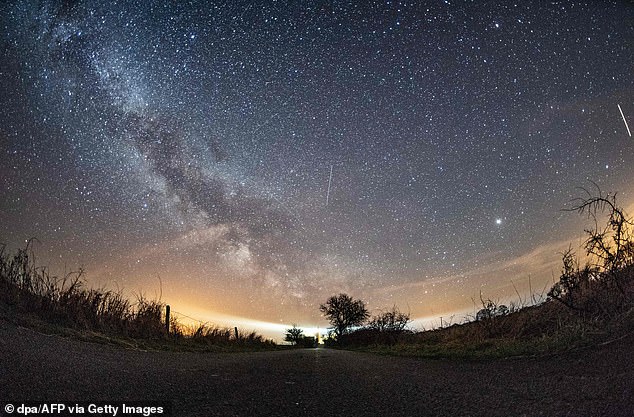
Lyrid Meteor Shower Peaks Tonight: Catch 15 Shooting Stars Hourly—Best Viewing Times Unveiled
Lyrid Meteor Shower 2025: Your Guide to April’s Celestial Spectacle
Mark your calendars: The Lyrid Meteor Shower, one of the oldest recorded meteor showers, will light up the skies from April 17–25, peaking in the pre-dawn hours of Tuesday, April 22. With up to 15 meteors per hour, this ancient display offers a chance to witness “shooting stars” without needing special equipment—just a dark, clear sky.
What Are the Lyrids?
The Lyrids occur when Earth passes through debris from Comet C/1861 G1 Thatcher, a comet orbiting the sun every 415 years. As particles from the comet burn up in our atmosphere, they create bright streaks of light. These meteors, traveling at 29 miles per second, often leave glowing trails and are visible across the entire sky.

The Lyrids appear to originate from the constellation Lyra, near the bright star Vega.
How to Watch
- When: Peak viewing is between 3–5 a.m. on April 22, but meteors will be visible nightly until April 25.
- Where: Find a location away from city lights with an unobstructed view of the sky. Lie back on a recliner or blanket to maximize visibility.
- Pro Tip: Allow 20–30 minutes for your eyes to adjust to the dark. No telescope needed—meteors move too fast for close-up viewing.
Dr. Robert Massey of the Royal Astronomical Society notes, “Look for short-lived streaks of light. They’re remnants of a comet observed by humans since 687 BC.”

Composite image of Lyrid meteors over Niederhollabrunn, Austria (2020).
Why Are the Lyrids Special?
The Lyrids hold the title of the oldest recorded meteor shower, documented for over 2,700 years. Unlike slower showers, Lyrids are known for occasional “outbursts” of up to 100 meteors per hour, though 2025 is expected to follow its typical rate.
2025 Meteor Shower Calendar
After the Lyrids, keep an eye out for these celestial events:
- Eta Aquariids (Apr 19–May 28): Peaks May 5 with 50 meteors/hour.
- Perseids (Aug 11–13): Summer’s highlight, offering 150 meteors/hour.
- Geminids (Dec 4–20): Year’s most vibrant shower, with multicolored streaks.

Lyrids can appear anywhere but trace back to Lyra.
Weather Outlook
The Met Office predicts clear spells in the UK on April 22, particularly in the Western Isles, east coast, and southeast England. Cloud cover may increase later in the night, so early viewing is advised.
Final Tips
- Dress warmly—April nights can be chilly.
- Avoid phone screens to preserve night vision.
- Patience is key: Meteor showers are unpredictable, but the wait is worth it.
Whether you’re a seasoned stargazer or a first-timer, the Lyrids offer a timeless connection to our cosmic history. Don’t miss this chance to marvel at the universe’s fireworks!

Lyrid meteors over Tissington, Derbyshire (2021).
Word count: ~600


